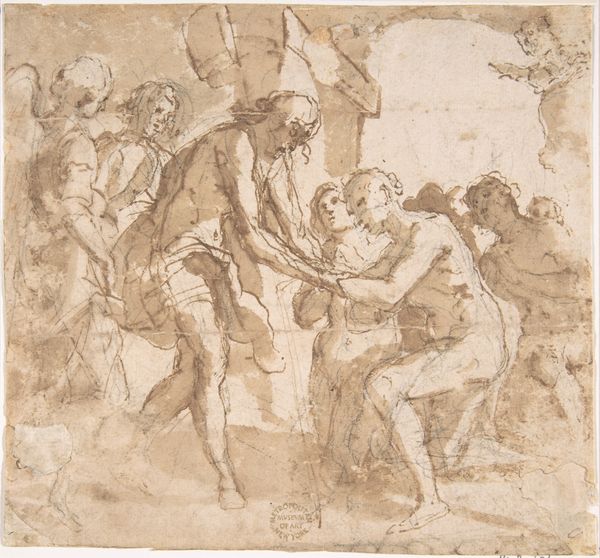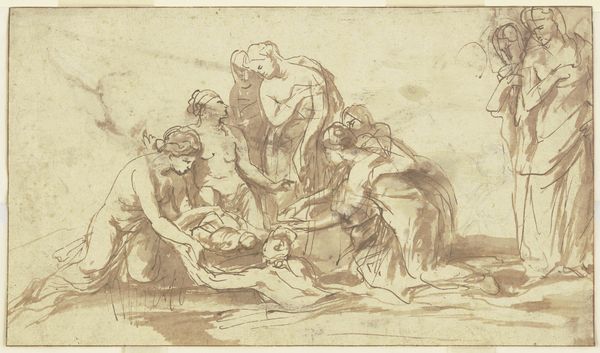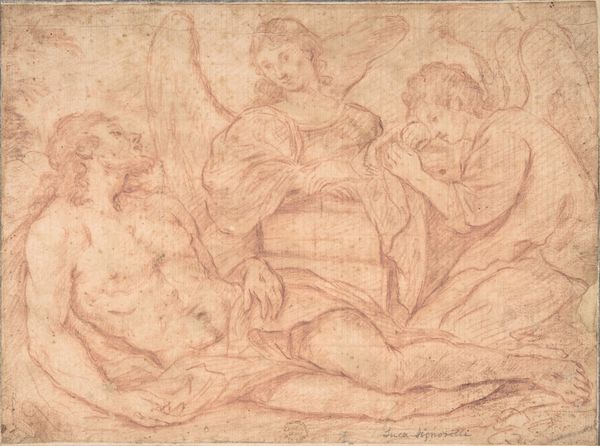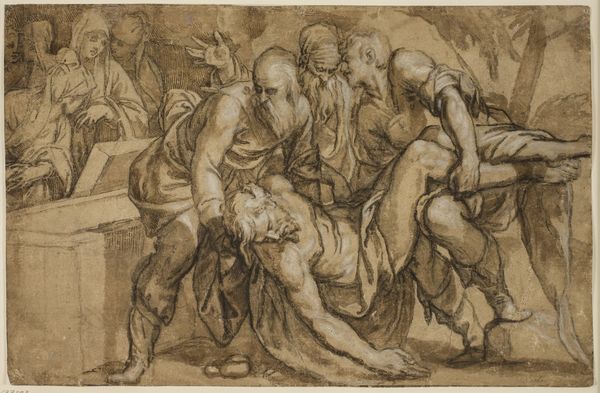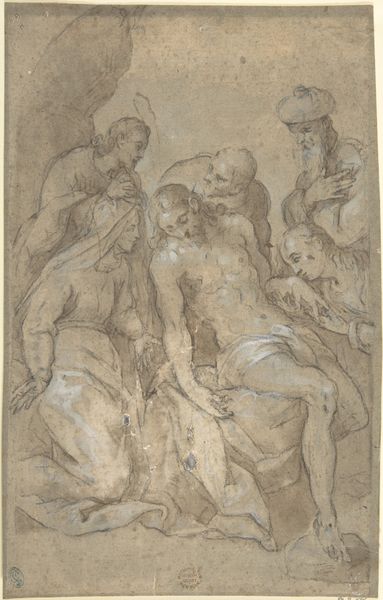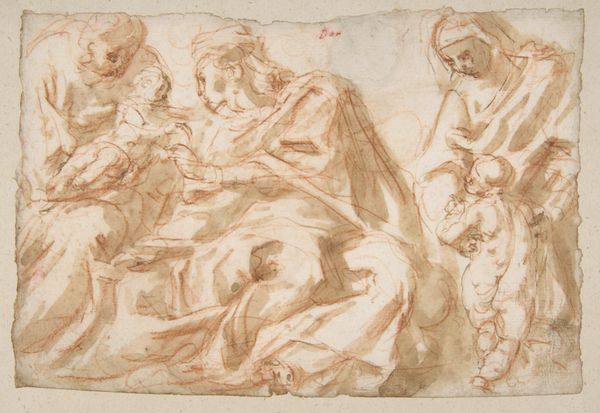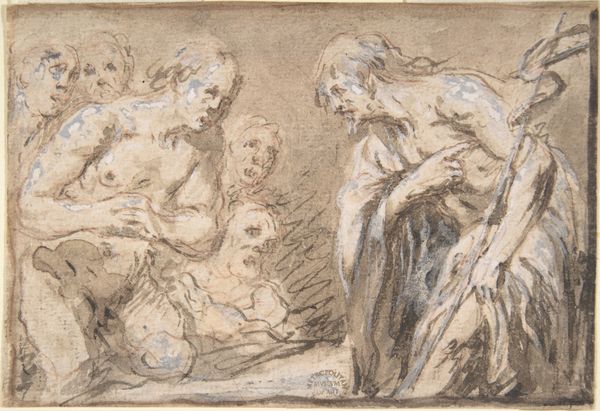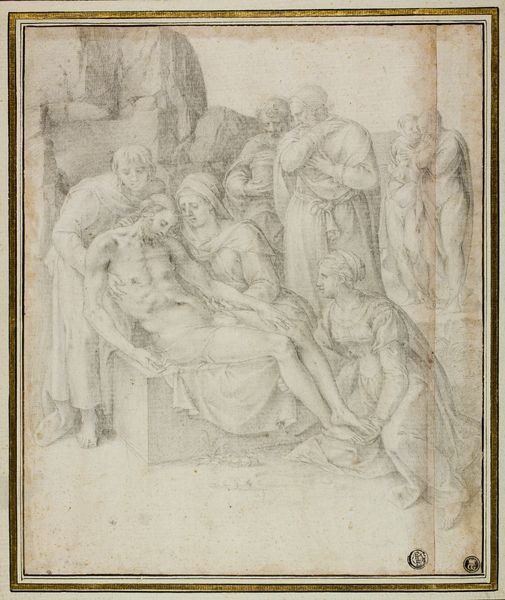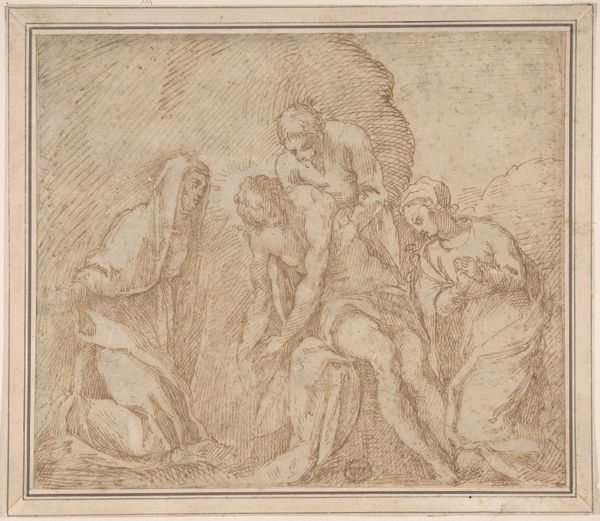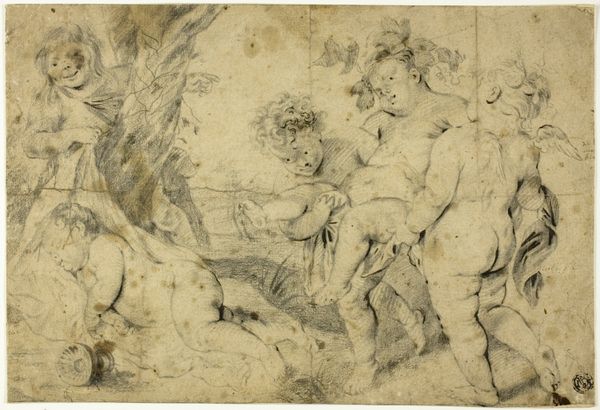
The Holy Family with Attendant Putti 1560 - 1630
0:00
0:00
drawing, print, paper, charcoal
#
drawing
# print
#
charcoal drawing
#
figuration
#
paper
#
11_renaissance
#
charcoal
#
history-painting
#
charcoal
#
italian-renaissance
Dimensions: 4 3/8 x 8in. (11.1 x 20.3cm)
Copyright: Public Domain
Curator: Here we have "The Holy Family with Attendant Putti," a drawing attributed to Cesare Pollino, created sometime between 1560 and 1630. It’s rendered in charcoal and red chalk on paper. Editor: My first impression is one of gentle movement, like watching figures emerge from a soft, earthy mist. It’s a scene brimming with tenderness and perhaps a touch of melancholy? Curator: Yes, melancholy is a great descriptor. The composition centers on Mary, Joseph, and the infant Jesus, with playful putti—cherubic figures—attending them. Note how Pollino uses line and shading to create a sense of depth, focusing our attention on the central figures of the Holy Family. Editor: And that reliance on line, rather than intense color or modeling, feels particularly appropriate for such an intimate subject, lending an air of spiritual reverie and humility. The almost ghostly charcoal strokes lend a sort of fleeting, dream-like feel to the image. Curator: The use of charcoal and red chalk wasn't uncommon for preliminary sketches during the Renaissance. This medium allowed artists to quickly map out compositions and work through ideas. Symbolically, the Holy Family represents the cornerstone of Christian faith, while the putti embody divine love and innocence. Consider the recurring motif of infants throughout art history, these depictions, especially in religious contexts, served to evoke emotional responses and invite a compassionate contemplation on humanity’s capacity for good. Editor: It's remarkable how Pollino captures a very human tenderness within a religious narrative. You see the care in Joseph’s gaze, and the gentle support given by Mary – a palpable sense of parental love. Even those slightly cheeky putti seem imbued with a gentle kind of grace and joyful mischief. Curator: Absolutely. Also, the drawing would not only have been an exercise of skill for Pollino, but a reminder of what a godly, spiritual life should embody, something that other observers would likely have found instructional. It served to keep alive both Christian tradition and moral duty. Editor: It really does make you think about how art functions both as a mirror and a lens—reflecting the values of the time while focusing attention on specific spiritual ideals. The fragility of the drawing, its ethereal quality, only seems to amplify that feeling. Curator: Precisely. A truly affecting rendering. Editor: Indeed, it’s left me feeling a little more grounded and a little more hopeful.
Comments
No comments
Be the first to comment and join the conversation on the ultimate creative platform.
